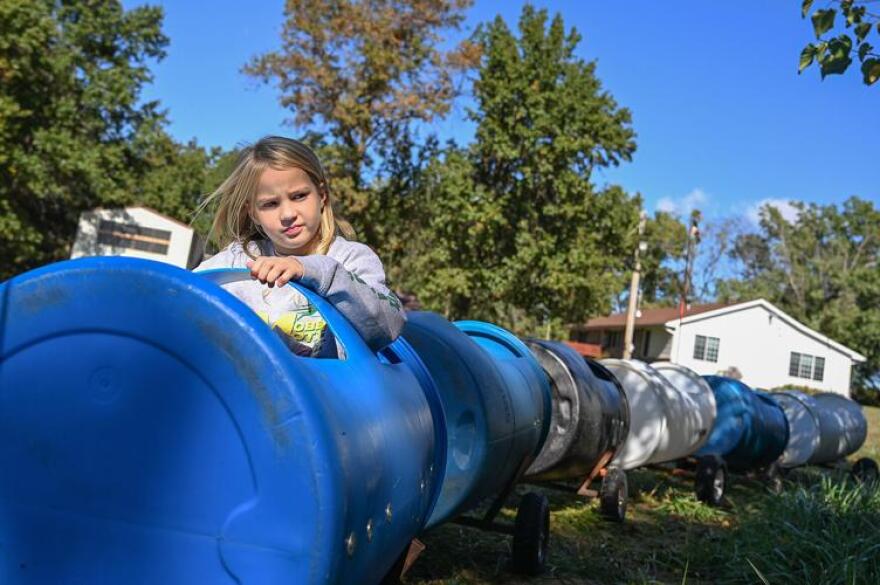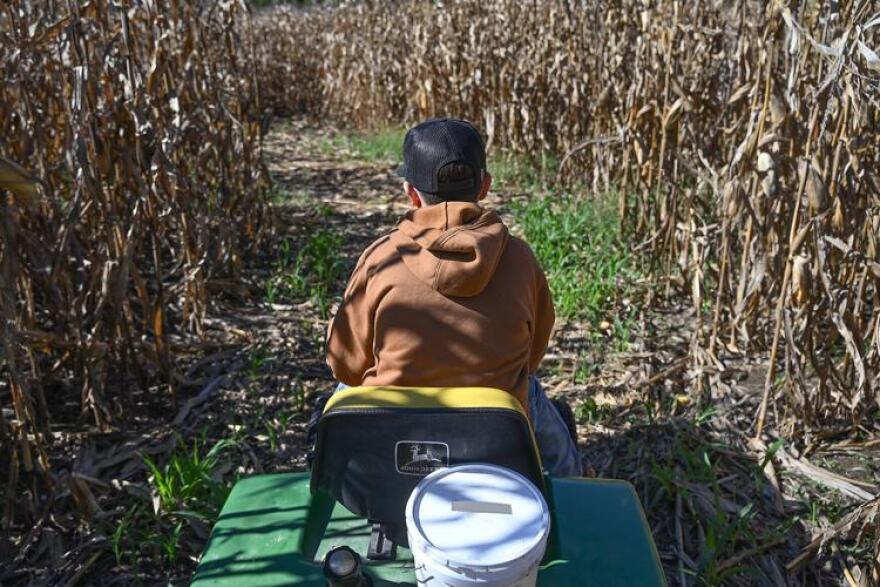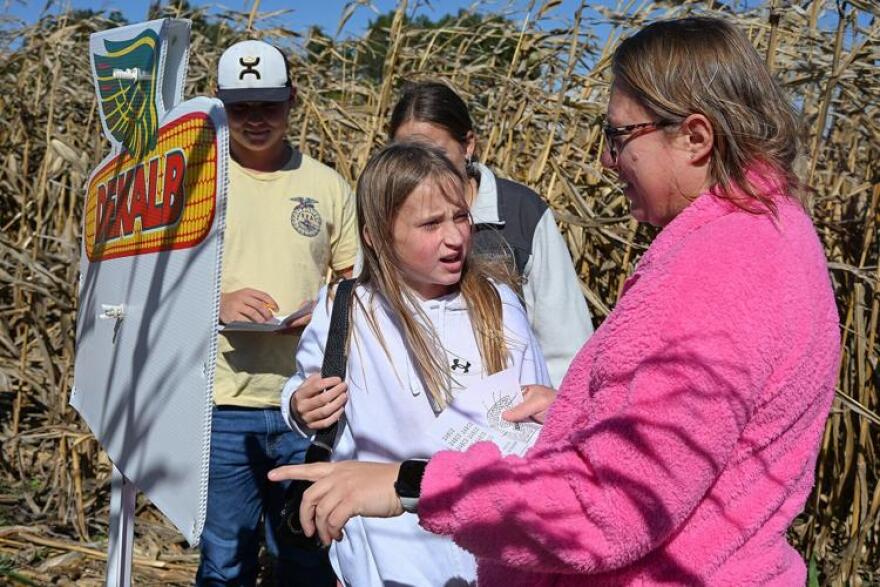There’s more to corn mazes than getting lost among corn that’s 10 feet tall. They can be serious business for farmers.
A rite of passage in autumn, corn mazes support farms economically, boost agritourism and can deepen community ties.
For the past three years, Boots Farms south of Moberly has benefited from the boom in corn mazes, a marriage of agriculture and entertainment that draws millions of visitors to farms around the country.
“It’s a family business, and it takes all of us to do it,” said Melissa Boots, the mom in the family. “My husband is a full-time farmer. We do corn and soybean farming, and we have taken this on as our project.”

Boots Farms features a 6-acre maze that takes between 30 minutes and an hour to complete, and a 1-acre “Lil Maze” for younger navigators.
This weekend is the maze’s last for the season. The maze at 4255 County Road 2730 near Moberly will be open Saturday and Sunday.
Creating their maze takes away about an acre of corn from the harvest, Boots said.
“Still, it’s provided another source of revenue for the farm,” she added.
The Boots Farm maze, as well as more than a dozen others in central Missouri, fits a nationwide trend in agritourism that has been growing since the first maze was cut into a field of corn in Pennsylvania in 1993.
The intent was to add income during the off-season, and many small farms rely on them economically. A single maze can bring in more revenue than the corn harvested from that same field, according to a report from Morning Ag Clips.
“Some are growing in several different directions to take advantage of interest in fall festival tourism,” said Jason Franken, associate professor of agricultural economics at the University of Missouri. “Such seasonal activities could provide supplementary income.”
The Boots Farm charges $10 admission for its corn maze and additional activities. For the Boots family, the benefit extends beyond the extra dollars.

Their son, Hunter, is a senior at Mizzou studying agricultural systems technology. His mother credited him with jumpstarting the maze project. When he was in high school, he decided to develop a pumpkin patch for an FFA project.
“I said, ‘You can just use the garden in the backyard,’” his mother said. “Then he comes home and tells me he ordered a thousand seeds, which is about an acre of pumpkins. Obviously, the garden was not going to work.”
The pumpkin patch is now in its fifth year and has quadrupled in size. The maze was added in 2023 with other attractions like a jump pad and a slide.
“We plan on bringing in more attractions, some games and maybe increasing the size of the corn maze over time,” Hunter Boots said.

The Boots family contracts with Precision Mazes, a company in Lee’s Summit, to collaborate on maze design and create the network of intricate twists and turns.
Designing a maze is very client driven, said Rob Stouffer, owner of Precision Mazes. During the design process, he said it is important to keep a 15-foot standing corn barrier between each individual walking path in the maze.
“We want to keep a sufficient amount of corn barrier so people stay on the path,” Stouffer said. “If they are standing on the trail and can see through to an adjacent trail, people will try to cut through the corn to that trail.”
The maze is designed in the spring and carved in the summer. Stouffer uses a skid loader guided by GPS to shape the maze paths. His job, when carving, is to keep the machine in line with the GPS.
Boots Farms has had different designs each year: their business logo, the Mizzou logo and, this year, the logo for Dekalb, a seed company that helps supply the farm.
“When we started doing this 25 years ago, there was a novelty to it,” Stouffer said. “I think corn mazes have really become woven into the fabric of our culture.”
Melissa Boots said she has found that people in the community come to the farm multiple times a year, year after year.
“You’re going to have a good time, and likely you’re going to go back next year,” Stouffer added. “It becomes a tradition where friends and families make memories on the farm.”

Agritourism helps bridge the urban-rural divide, promotes cultural exchange and encourages environmental stewardship by opening up transparent, firsthand views of farm life, according to a study from the Golden Shovel Agency.
“We just keep trying to grow,” Melissa Boots said. “We’re trying to provide something for the community that gives people an opportunity to bring their families out to the farm and enjoy the afternoon.”
This story was originally published by the Columbia Missourian and shared by Missouri Business Alert.




